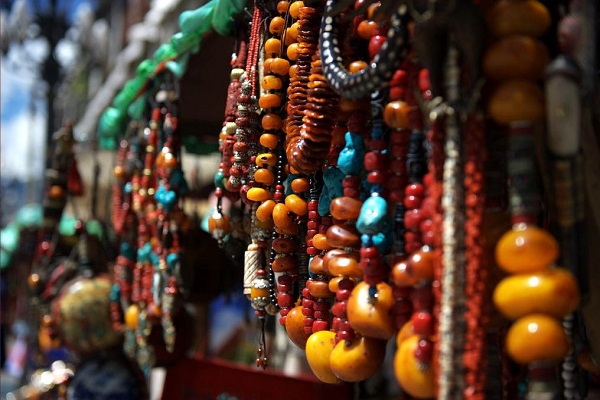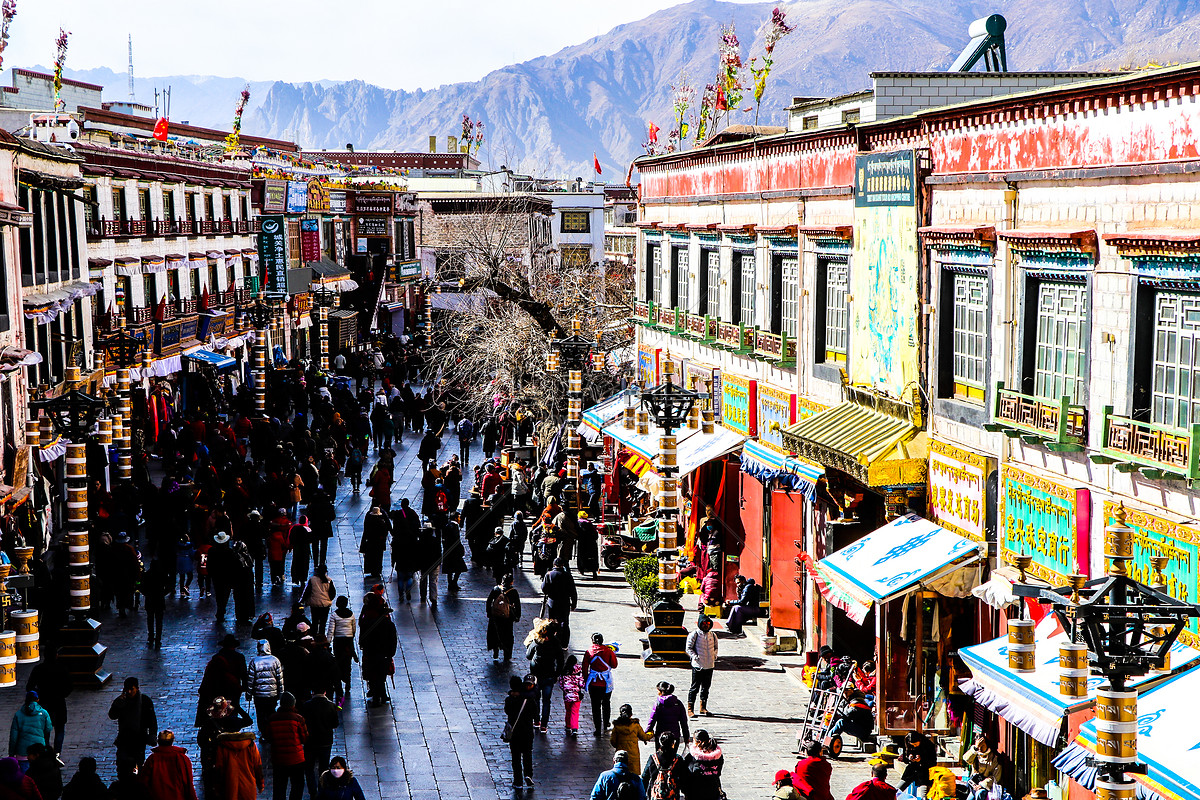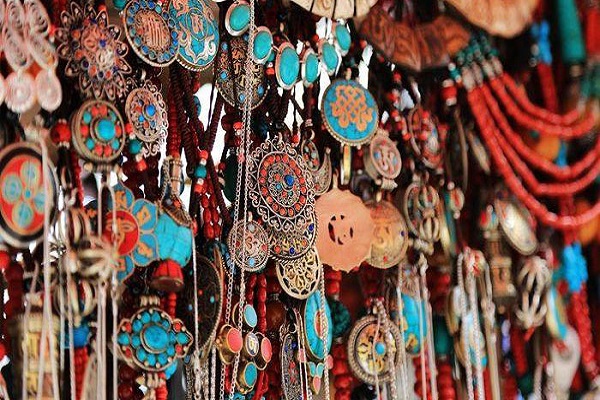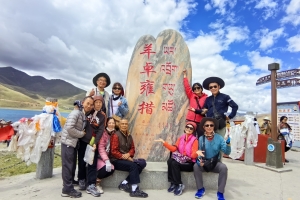Beyond its awe-inspiring landscapes and sacred monasteries, Tibet offers a rich tapestry of artisan crafts, medicinal marvels, and spiritual keepsakes that make for unforgettable souvenirs. Whether you are wandering the winding alleys of Lhasa’s Barkhor Street or venturing into bustling local markets, you’ll find a world of treasures waiting to be discovered. This comprehensive guide will introduce you to the most sought-after items, share insider tips for authentic shopping, and point you toward the best destinations for bringing a piece of Tibet home.
Must-Buy Souvenirs of Tibet

Shopping in Tibet is not merely a retail activity—it’s an immersion into a culture where every object carries deep spiritual significance or centuries-old craftsmanship. From hand-painted Thangka scrolls that depict sacred Buddhist imagery to potent herbal remedies harvested from the high-altitude plains, Tibetan souvenirs reflect the land’s mystical essence and enduring traditions. By choosing authentic Tibetan products, travelers not only support local artisans and communities but also forge a personal connection to the region’s storied past.
Thangka Paintings: Windows into Tibetan Spirituality
Thangka paintings are among the most revered Tibetan art forms. These intricate scrolls portray deities, mandalas, and scenes from Buddhist teachings, rendered in pigments derived from precious minerals (turquoise, malachite) and organic dyes (saffron, indigo). Beyond their vivid hues, Thangkas serve as meditation aids and temple decorations. When selecting a Thangka, look for finely detailed brushwork, natural mineral-based colors that remain vibrant, and traditional mounting with brocade borders.
Prayer Wheels and Mani Wheels: Spinning Blessings
Prayer wheels—cylindrical devices inscribed with mantras such as “Om Mani Padme Hum”—are designed to spread spiritual merit with each rotation. Available in sizes from palm-held copper wheels to ornate gold-plated temple models, these objects are more than souvenirs; they are tools for cultivating mindfulness and compassion. Seek out prayer wheels crafted by recognized monasteries or workshops to ensure genuine spiritual lineage.
Tibetan Ornaments and Jewelry: Emblems of Good Fortune
Tibetan jewelry is crafted from locally sourced materials like coral, agate, yak bone, and silver alloy. Traditional designs often incorporate the “Dzi” bead—a tubular agate believed to confer protection and prosperity. Necklaces, bracelets, and earrings fashioned with these elements not only make striking fashion statements but also serve as talismans. Different patterns and bead arrangements carry specific blessings: wealth, longevity, health, or spiritual insight.
Hand-Carved Masks: The Faces of Ritual Performance
Tibetan masks, used in sacred cham dances and theatrical performances, represent a pantheon of deities, demons, and mythical creatures. Each mask is hand-carved from wood or papier-mâché, then painted in symbolic palettes—fiery reds for wrathful deities, serene whites for peaceful gods. Displayed on walls or worn in festive ceremonies, these masks are evocative reminders of Tibet’s living religious heritage.
Medicinal Herbs and Remedies: The Hidden Pharmacy of the Plateau
Tibet’s rugged terrain yields botanical treasures prized in traditional Tibetan medicine. Cordyceps sinensis (known as yartsa gunbu), Alpine snow lotus, Rhodiola rosea, and premium saffron crocus are among the most popular. Codified in the Four Medical Tantras over two millennia ago, Tibetan medicine emphasizes holistic balance and uses rare ingredients—pearl powder, musk, bezoar—to treat everything from cardiovascular ailments to high-altitude fatigue. When purchasing, choose reputable pharmacies or licensed herbal shops to guarantee authenticity.
Tibetan Incense: Scents of Serenity
Incense has been integral to Tibetan rituals for over a millennium. Composed of a blend of over twenty botanicals—saffron, sandalwood, musk, and Tibetan nutmeg—authentic incense purifies spaces, invites auspicious energies, and supports mental clarity. Nyemo Tibetan Incense, with a legacy of over 1,300 years, is considered the pinnacle of fragrance craftsmanship and makes a thoughtful gift for friends seeking wellness and peace.
Top Shopping Destinations in Lhasa

Barkhor Street: The Heart of Tourist Souvenirs
Encircling the sacred Jokhang Temple, Barkhor Street buzzes with stalls and shops offering jewelry, textiles, Thangka prints, and religious artifacts. While bargaining is customary—prices can often be negotiated down to one-third of the asking rate—exercise caution: many trinkets are mass-produced. For authentic pieces, look for shops that display workshop signs or monk endorsements.
Lhasa Ethnic Tourism Handicraft Mall
Just steps from Jokhang Temple Square at No. 30 Barkhor West Street, this multi-story indoor mall curates high-quality handicrafts under one roof. Here you’ll find certified Tibetan silver jewelry, handwoven scarves, and legitimate Dzi beads sold at fair, transparent prices. The controlled environment offers respite from the crowds and protection against counterfeit goods.
Yutuo Road Pedestrian Street: Herbal Haven
In front of Jokhang Temple’s main gate lies Yutuo Road, lined with licensed herbal pharmacies and specialist boutiques. Whether you’re seeking premium Cordyceps, snow lotus, or traditional ointments, this pedestrian-friendly street is your best bet. Pharmacists often offer sampling and detailed consultations, ensuring you choose the right remedy for your needs.
Chongsaikang Tashi Market: A Local’s Paradise
Located on Beijing East Road, Chongsaikang Tashi Market (literally “Market Market”) caters primarily to Lhasa residents. Here, everyday essentials—fresh produce, textiles, household goods—are sold at wholesale prices. While not a typical tourist hotspot, the market offers a genuine glimpse into local life. Keep your wits about you as you navigate the busy aisles, and don’t hesitate to sample Tibetan dried fruits or yak jerky from the food stalls.
Shopping Tips for Tourists in Tibet

- Educate Yourself Beforehand: Familiarize yourself with common Tibetan motifs, materials, and pricing ranges.
- Seek Monastery-Approved Vendors: Items bearing monastery seals or certificates ensure proceeds support religious and cultural preservation.
- Bargain with Respect: Haggling is part of the experience, but maintain politeness and acknowledge the artisan’s efforts.
- Inspect for Quality: Examine gemstones for uniformity, check Thangka paint layers for authenticity, and ensure herbal products are properly sealed with batch numbers.
- Mind Customs Regulations: Some items—like large quantities of cordyceps—may be restricted for export. Always retain purchase receipts and verify local regulations.
Bringing the Spirit of Tibet Home
Shopping in Tibet transcends the acquisition of keepsakes—it’s a way to carry home the blessings, artistry, and healing traditions of this sacred land. From the brilliance of a hand-painted Thangka to the subtle fragrance of traditional incense, each memento connects you with centuries of Buddhist practice and nomadic ingenuity.
For travelers seeking a seamless blend of cultural exploration and curated souvenir selection, Journey2Tibet offers bespoke shopping tours alongside expertly guided excursions through Lhasa’s historic heart. Whether you wish to delve into the art of Thangka painting, source rare herbal remedies, or simply navigate the vibrant markets with a seasoned local, Journey2Tibet ensures your journey is both enriching and authentic. Let us guide you to the hidden gems of Tibet, where every purchase tells a story and every artifact is imbued with the spirit of the Himalayas.










